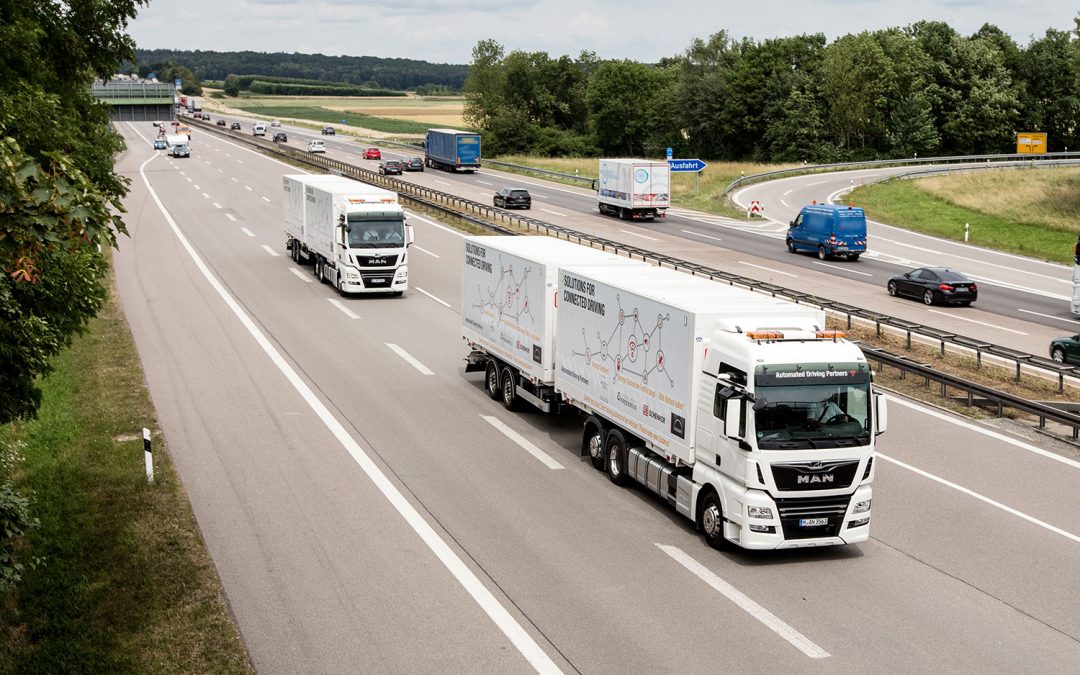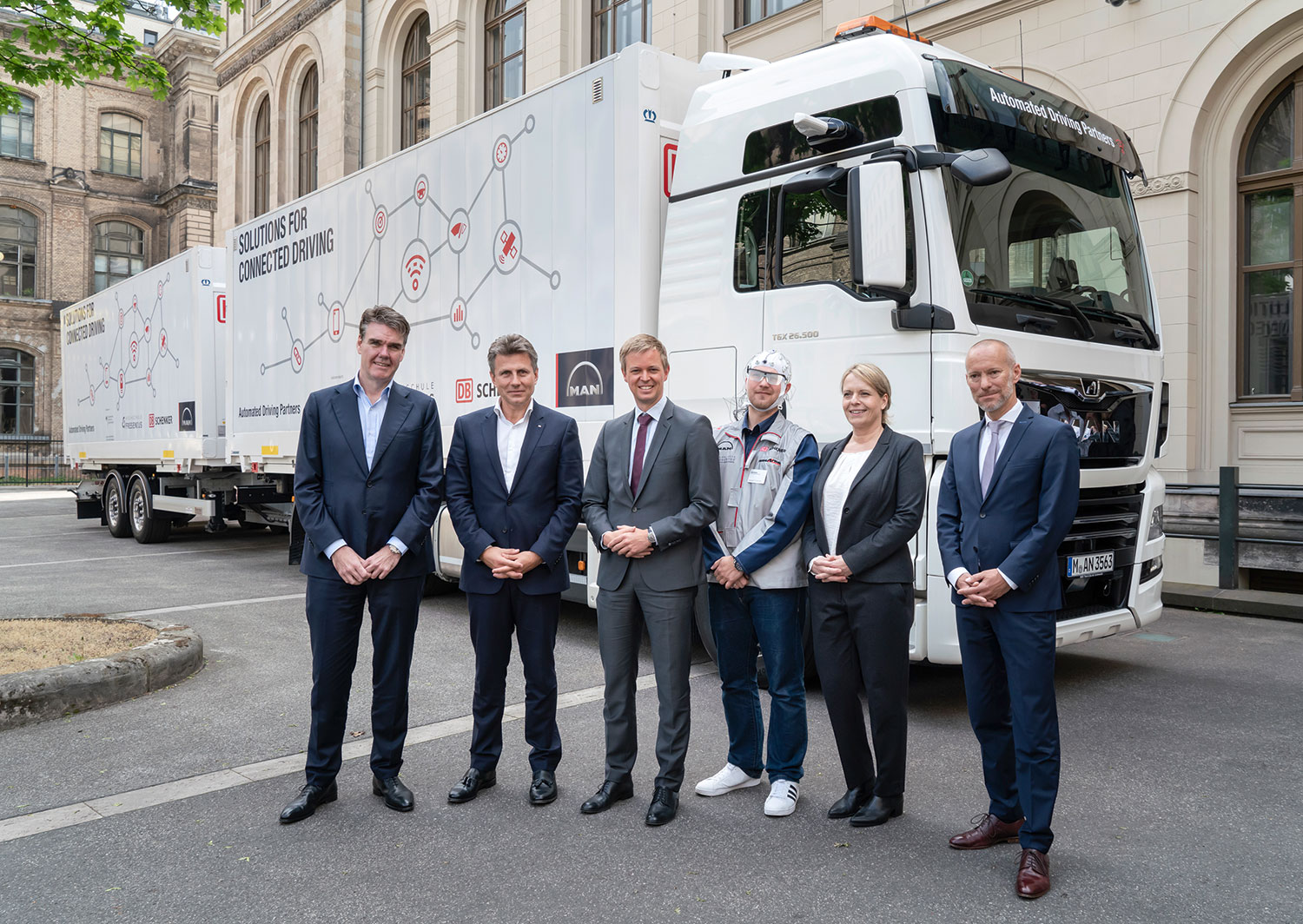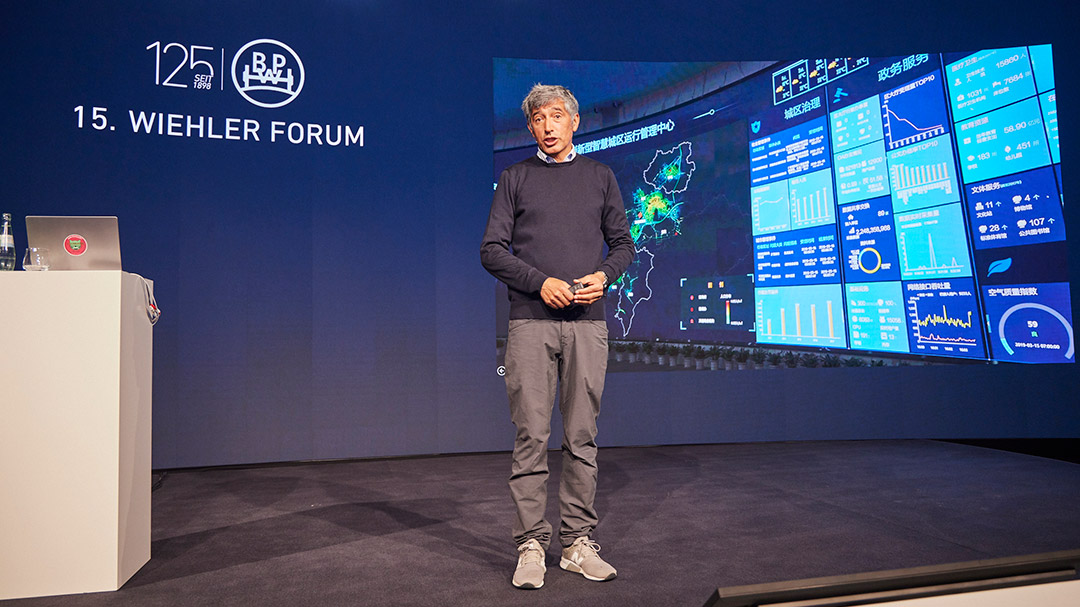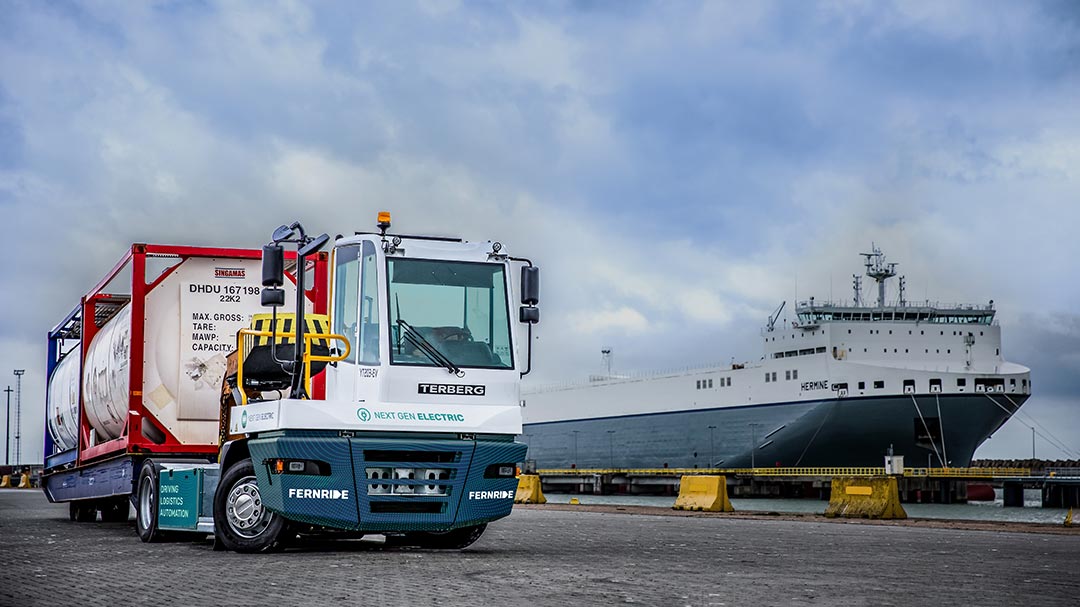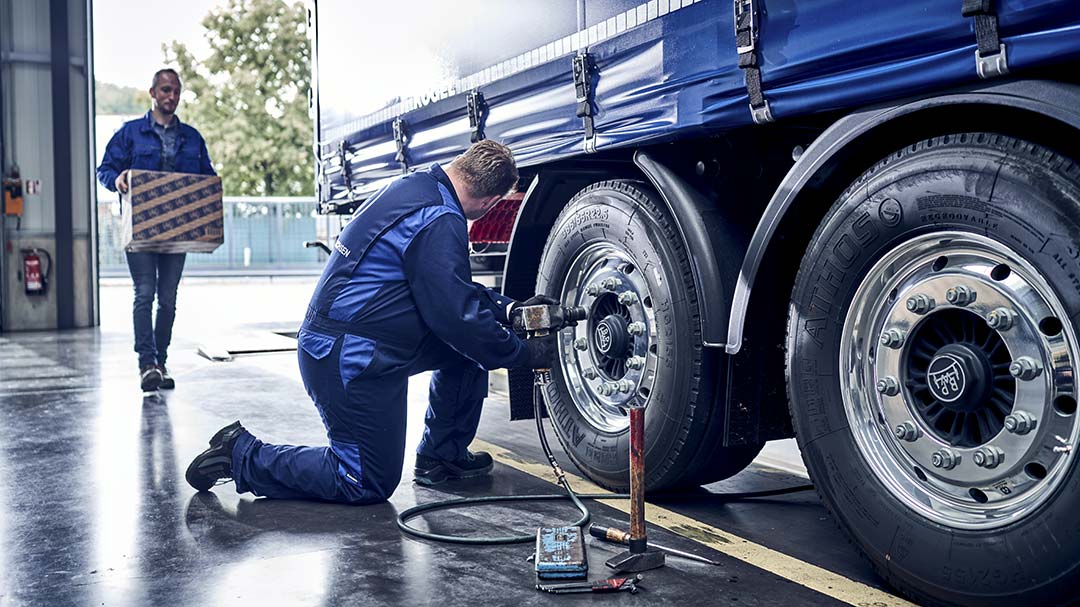Text: Juliane Gringer
Photos: MAN Truck & Bus
The technology was reliable, less diesel was used and the drivers were also satisfied: in a practical test on the A 9 motorway between Nuremberg and Munich, truck platooning convinced project partners DB Schenker and MAN Truck & Bus. Even if there is still a long way to go until it comes into operation, the initiators are certain that the technology offers great potential.
Platooning saves three to four per cent fuel on the road: according to the Result of the world’s first real-life test of networked truck convoys. And the initiators are convinced that there is even plenty of room for improvement: ‘We believe that values around six to eight percent are definitely realistic,’ explains Dr Chung Anh Tran, Head of Autonomous Driving – Road Transport at Deutsche Bahn AG. DB Schenker, in cooperation with MAN Truck & Bus and Fresenius University of Applied Sciences, tested two digitally networked trucks as part of a shuttle service between Nuremberg and Munich – and gained a lot of good experience in the process. Torsten Klein, Senior Vice President, Research, at MAN Truck & Bus, draws an initial conclusion: ‘Platooning reduces the complexity of automated driving; it is manageable and controllable. We were able to clearly demonstrate this during this project.’
Platooning can be implemented in practice
From mid-2018 to January 2019, two platoons of two were in operation on the digital test field along the A 9 motorway, which had been approved for this purpose by the German Federal Ministry of Transport and Digital Infrastructure. They were able to spend 69 per cent of driving time as part of a harnessed team. It was not possible to spend longer in formation, mainly due to regulatory frameworks – platooning is prohibited in the rain, through roadworks and at motorway junctions, for example. The vehicles drove at intervals of 12 to 15 metres. ‘We’d also like to drive a little closer,’ says Torsten Klein. ‘Ten meters would be technically possible.’ He was pleasantly surprised by the very high technical availability: ‘Thanks to the modern sensors and drive technology that we can use today, we are able to guarantee about 98 per cent system availability. This was an important finding from the test, which shows that the concept can be implemented in practice.’
No incidents or delays
The aim of the Pilot project called EDDI, which was funded by the German Federal Government to the tune of around two million euros, was to test platoons in live traffic and to verify the efficiency claims seen in laboratories in practice. ‘We also wanted to find out if other road users would accept the technology and what fuel savings can really be achieved,’ stresses Torsten Klein. The test was run on an approximately 140-kilometre-long route between the DB Schenker hubs in Munich and Nuremberg. ‘Of course, we didn’t pick the most complex situations right away, but chose night drives instead – there is less traffic on the A 9 at that time. Nevertheless, there were sufficient occasions when platooning had to react to the traffic situations as well.’ With 35,000 kilometres driven in all, not a single safety-relevant incident occurred, nor did any unintentional severe deceleration: ‘There was just one incident involving a merging vehicle that very actively entered the platoon. But the system reacted exactly as it should react: it braked hard, avoided a collision and immediately disbanded the platoon.’
Fuel savings
According to Torsten Klein, fuel savings of three to four per cent are considerable. ‘Nevertheless, it should not be underestimated that fuel is also needed to keep the platoon together.’ Each manoeuvre that causes the platoon to disband – when a car merges, for example – uses about 0.1 litres of fuel. ‘But we’re talking about savings of three to four per cent compared to the most efficient vehicles, and there’s plenty of potential for optimisation,’ Klein continues. ‘We’ve not yet been GPS-controlled and so far, we’ve had to drive at exactly 80 kilometres per hour. We must also not vary between accelerating and decelerating – it can all still make a big difference.’
Focusing on the drivers
Three-stage road map on the way to platooning
Driving automation forward
Apart from clarifying the legal basis, the provision of a suitable technical environment has also been lacking in the run-up to these live tests. ‘Intelligent traffic signs that preview upcoming motorway sections are very helpful for platooning, for example,’ says Dr Chung Anh Tran. And physical infrastructure should not be underestimated either: ‘Platooning partners must be able to meet to agree to drive the next section together. Space may be required for this purpose. All this is yet to be organised – we are still at the very beginning.’

